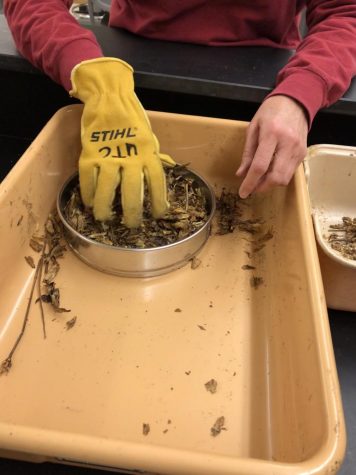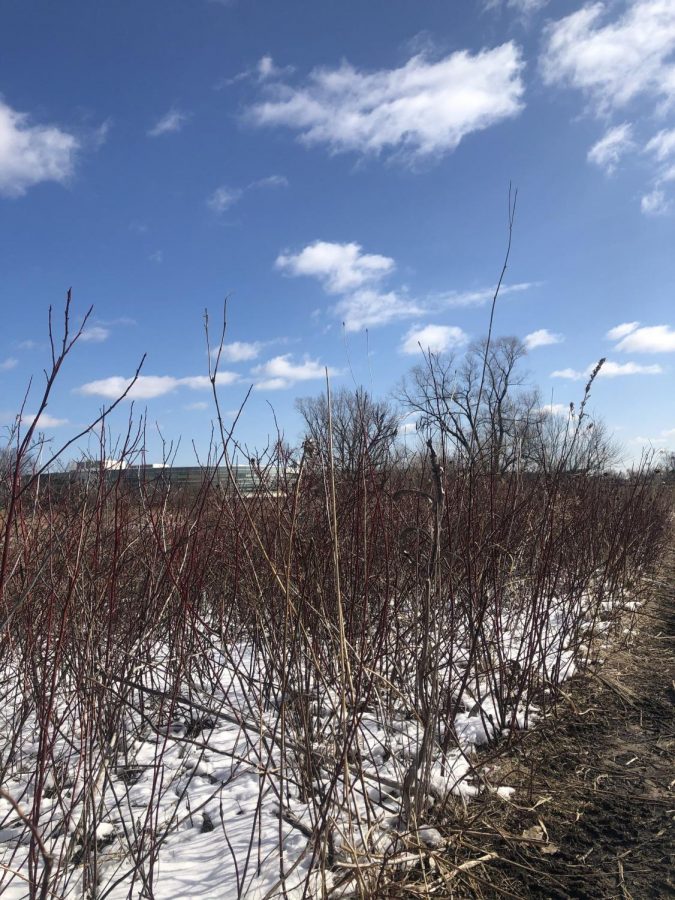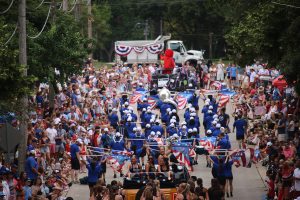Diversifying the Russell R. Kirt Prairie
March 4, 2020
 Every spring and fall semester Remic Ensweiler, the prairie manager at COD, and some students with the love for the outdoors come help maintain the prairie on campus. The Russell R. Kirt Prairie is located behind the Health and Science building on COD’s campus. The 11-acre prairie was brought back to life through a reconstruction and replanting effort between 1984 and 2000.
Every spring and fall semester Remic Ensweiler, the prairie manager at COD, and some students with the love for the outdoors come help maintain the prairie on campus. The Russell R. Kirt Prairie is located behind the Health and Science building on COD’s campus. The 11-acre prairie was brought back to life through a reconstruction and replanting effort between 1984 and 2000.
Ensweiler and volunteers go out into the prairie and collect seed, cut down branches and burn areas of the prairie. Multiple times every week Ensweiler leads students, like frequent volunteer Dakota Murtaugh, out in the prairie to help restore and diversify the land.
“He [Ensweiler] has us collect all the seed, then we process it,” Murtaugh said. “The wind, rain, snow will do what we’re doing, which is break up the pod. It’ll be planted for us, just on a natural cycle. What we’re doing is basically speeding up the process.”
As Ensweiler went out into the prairie to continue cutting down branches, a few volunteers stayed inside to process the seed of some prairie plants. The process allows the prairie to produce more seed than needed and the extra seed can be traded to other restorations. This past week cream gentian (Gentiana alba) and pale purple coneflower (Echinacea pallida) were separated into different categories: unprocessed seed, processed seed and chaff. The chaff bag is full, finely chopped, dry, protective plant casing.
“Illinois, ‘The Prairie State,’ was once covered in a landscape of wildflowers and tall grasses,” said Ensweiler. “In a very short period of time, this soil was tilled over and farmed, which resulted in us losing 99.99% of the original prairie. With that loss came the loss of ecosystem services such as rainwater management and habitat for pollinators, birds and many other animals. It is important to restore the prairie best we can, not only to help with rainwater management, erosion prevention and soil heath, but also in order to provide this now very rare habitat to support wildlife.”
COD Biology Professor Jane DiGivanoni said the prairie restoration effort provides good to those who put in the work.
“It’s [the prairie is] providing a place for students to go and just experience nature and biodiversity and that in itself reduces stress,” said DiGiovanni. “But also, we as humans need biodiversity just for our own souls. When you go away from the lawn and walk into the prairie, it’s a different experience. Now the plants are larger, and now you’re seeing the insects that are flying around and the birds that are coming in. It feels different. It helps us to feel more human. We need that. Unfortunately, today a lot of children aren’t just going out and playing in the wild like they used to. They are growing up to not care about nature.”
The prairie on campus has about 150 different plant species. Prairies can support 250 to 300 plant species, and maybe more, if they are incredibly diverse. Although many people on the COD campus want to improve the diversity of the Russell R. Kirt Prairie, not many prairies are being restored or protected.
Ursula Clark, another volunteer, said, “Less than 1% of Illinois prairie remains.”
There are prairie restoration days every Tuesday, Wednesday and Thursdays throughout the spring semester. For more information go to Chaplife or email [email protected].


















